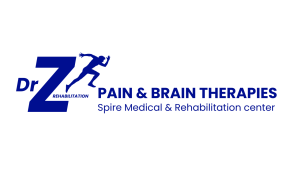
Overview
Scoliosis is a common and mysterious condition that affects many youngsters, causing the spine to curve sideways. Though it can be attributed to certain conditions like cerebral palsy or muscular dystrophy. In most cases its origin remains uncertain – leaving parents with more questions than answers. It’s often a surprise to discover that your child has scoliosis – the condition in which their spine curves abnormally. While most cases are mild some can worsen over time and cause complications. Like impaired lung functions due to reduced space within the chest cavity. Regular monitoring is essential as it helps determine. If any interventions need be made such as wearing braces or even surgery for more severe scenarios.
Scoliosis Symptoms
Scoliosis is an affliction that can have several physical scoliosis signs, unevenness in the shoulders and waist. One hip raised higher than the other. A rib cage jutting out from one side of your back when you bend forward – these are but some symptoms. It’s most distinguishing feature may be that it actually causes a person’s spine to twist as well as curve sideways. So if there’s any asymmetry between either sides of your body. Don’t shy away from seeking medical advice for this condition.
What Causes Scoliosis
While the cause of the most frequent form of scoliosis remains a mystery. Physicians have identified several possible origins for lesser common cases. Heredity may play a role, though this is yet to be determined with certainty. Alternatively, neuromuscular conditions such as cerebral palsy or muscular dystrophy could provide an explanation. Birth defects involving spinal bones can also lead to scoliosis and so too. Can surgeries on the chest wall early in life or injuries/infections impacting the spine itself.
Scoliosis Diagnosis
Your doctor will start off your appointment by gathering all the facts on your child’s medical journey so far. Then, their physical examination may include a stand-and-bend test to check for any asymmetry when it comes to rib cage prominence. Last but certainly not least, they might also engage in some neurological examinations. Focusing on muscle weakness and reflex response – making sure everything is fit as can be.
Imaging Tests
Diagnosing scoliosis can be tricky. X-rays are a reliable and accessible tool but repeated radiation exposure over the years is cause for concern. Which means your doctor may suggest using a 3D imaging system with lower doses of radiation to check. If the curve has worsened but unfortunately this isn’t available at all medical centers yet. Ultrasound is another option that is less precise while MRI might provide clues in case an underlying condition. Like spinal abnormality could also be causing it. No matter what options you weigh up make sure to discuss them carefully. Before deciding on one together with your healthcare provider.
Scoliosis Treatment – Physical Therapy
If you or your child is living with scoliosis, there is hope! Physical therapy can be a powerful tool to help manage this condition. Your physical therapist and surgeon will work together to decide the best customized treatment plan for you. Using guidelines established by the Scoliosis Research Society based on type and severity of symptoms as well as age. Whether it’s exercises before surgery, bracing during recovery periods, or just general management throughout all stages. Your personal physiotherapist is committed to providing support tailored specifically towards helping you reach optimal health goals no matter what they may be.
Physical therapists are a valuable source of knowledge and aid when it comes to managing scoliosis. Through education, movement exercises, strength training, and manual therapy techniques. They can help you gain better control over your condition by providing strategies for improving range-of-motion in the spine. As well as restoring mobility in weakened areas such as hips, shoulders and even head/feet.





